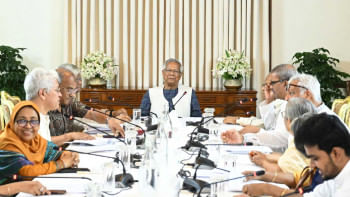Bangladesh uses more manmade fibres to make garments for global buyers

The use of non-cotton fibre in garment production in Bangladesh has increased to 29 percent from 25 percent in the last three years as exporters go for diversification for better prices and to expand their global footprint, according to a new study.
Varun Vaid, business director of Wazir Advisors Pvt Ltd, shared the findings at a press conference on the premises of the Bangladesh Garments Manufacturers and Exporters Association (BGMEA) in Dhaka today. He conducted the study on behalf of the BGMEA in the last two years.
Globally non-cotton fibre is used in 75 percent of garment manufacturing. In contrast, Bangladesh relies on cotton fibres to make 71 percent of the country's export-oriented products.
However, Bangladesh has more potential to use non-cotton fibre as the demand for manmade fibre garments is on the rise globally, according to the study.
If Bangladesh invests $18 billion, the country will be able to export $46 billion worth of non-cotton garment items by 2032, it said.
Speaking at the event, BGMEA President Faruque Hassan said that by using manmade fibres, the BGMEA wants to raise the global market share of locally made apparel items to 12 percent from 7.87 percent now since the prices are higher for the products made from artificial fibres.
He said climate change also has a major impact on fashion as consumers prefer non-cotton garment items to cotton items because of more functionality and sustainability.
"Local garment exporters are producing cotton garment items. By just increasing the volume of non-cotton products, we can expand to more markets and get better prices."

 For all latest news, follow The Daily Star's Google News channel.
For all latest news, follow The Daily Star's Google News channel. 



Comments